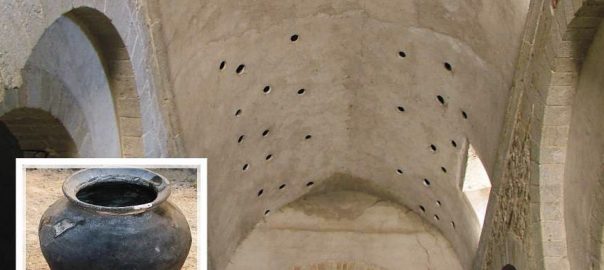IUS 2016 PLENARY SESSION WILL FEATURE ACOUSTIC POT DEVICES IN MEDIEVAL AND RENAISSANCE BUILDINGS

The plenary session of the 2016 IEEE International Ultrasonics Symposium will be dedicated to a very interesting field of Acoustics. The presentation entitled “Archaeology of the Sound through the Acoustic Pot Devices in Medieval and Renaissance Buildings: an Exploration of the Instigator’s Aim” will be presented by Bénédicte Palazzo-Bertholon and Jean-Christophe Valière from the ArcheoAcoustic laboratory of Poitiers University. The session will open the scientific sessions of IUS 2016 on Monday 19th of Septembre at the Auditorium François 1er in the Vinci conference center.
Archaeology of the Sound through the Acoustic Pot Devices in Medieval and Renaissance Buildings: an Exploration of the Instigator’s Aim
In the construction of religious buildings, the architectural acoustics is at the heart of the concerns of both builders and users. Some churches of the Middle Ages and Renaissance conserve in their walls, potteries identified as empirical devices of acoustic correction. This technique, which has archeological evidences in many European countries and the all around the Mediterranean sea, is still a mystery for scientists, because no discipline succeeded, alone by itself, in grasping the subject. This is why an interdisciplinary team was formed there about ten years ago, gathering archaeologists, acousticians, musicologists and historians to understand the acoustic aim and the specifications of these devices. This research crosses archaeological evidences, textual and graphical sources, the acoustic measurements, the knowledge of singing and the perception of sound in the Middle Ages and the Renaissance.
The acoustic methodologies mainly aim at catching resonance frequencies of the pots and then interpret the results in light of the singing practice. In most examples, it follows that the frequencies of the pots are always close to the singing voice pitch and the first harmonics. In addition, in many buildings, pots are often tuned on the fourth and occasionally on the fifth, which are characteristics intervals of antique and medieval music.
After a brief presentation of these technical devices used for over eight centuries to improve the perception of sound, we will present a specific case study located in the cathedral Notre-Dame of Noyon, in Picardy, France. Under the liturgical choir of the church, there remains a vault called “phonocamptique” in the literature of the nineteenth century. This is an underground room of 15 m² which contains 64 pots imbedded in the north, south and west walls. These 64 pots can be separated into two groups of 32 tuned in the fourth (statistically) and distributed with an interesting scheduling but we have not yet penetrated the meaning. The lack of textual evidence about its use has led us to make a fine acoustic analysis of the vault at first. This was performed by means of a microphones antenna showing that the pots act not only on the decay rate of the modes but also on the distribution of sound in space. Then a sung performance with an early music ensemble allowed us to experience the effect of pots in real conditions.
The results confirm the acoustic vocation of the vault and show that these initiators may had wanted to “improve resonating voice” in the words of the ancient texts.
 |
Bénédicte Palazzo-Bertholon |
| Bénédicte Palazzo-Bertholon (PhD) is archaeologist and archaeometrist, specialized in physical and chemical characterization of materials of the medieval architecture. Associate researcher of the Centre d’Etudes Supérieures de la Renaissance of Tours (CESR) and of the Centre d’Etudes Supérieures de Civilisation Médiévale (CESCM) of Poitiers, she co-directs since 2005, an interdisciplinary research group on the archaeo-acoustic, with Jean-Christophe Valière (Institut Pprime, Poitiers). She co-edited a first collective work on this topic entitled Archéologie du son. Les dispositifs de pots acoustiques dans les édifices anciens (in English : Sound’s archaeology. Devices of acoustic pots in ancient buildings), published in 2012. Within the frame of this research program, she studies archaeological remains of acoustic pot devices in churches of Middle Ages and Renaissance, to understand the purpose of their implementation, both acoustic, liturgical and symbolic. | |
 |
Jean-Christophe Valière |
| Jean-Christophe Valière received the Ph.D. degree in acoustics from the University of Le Mans, France, in 1991. He is currently a Professor at the University of Poitiers, France, since 1999. His research concerns the signal processing for acoustics and fluid mechanics such as old recordings restoration or high speed source localization by means of time-frequency, or time-scale transformations. This last two decades, his interest has been focused on the development of signal processing techniques to acoustic particle velocity measurement using Laser Doppler Velocimetry or Particle Image Velocimetry and their applications for non-linear acoustics and aeroacoustics. Recently, he is involved in archeoacoustic studies concerning acoustic potteries in medieval churches. A large part of these recent studies has been recently published in French in a special issue of the “Bulletin Monumental”. He is currently IEEE, SFA, EEA member. | |

